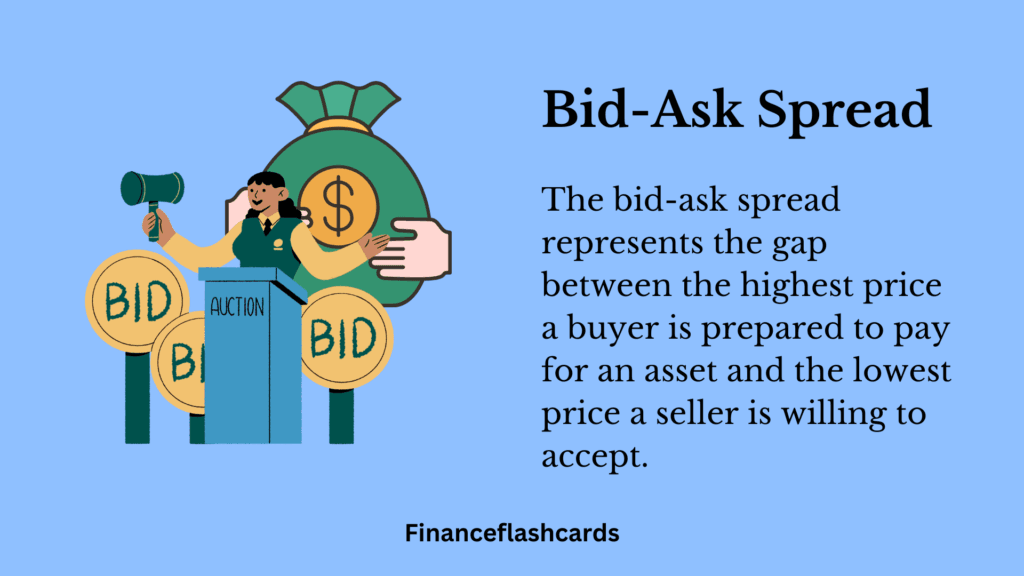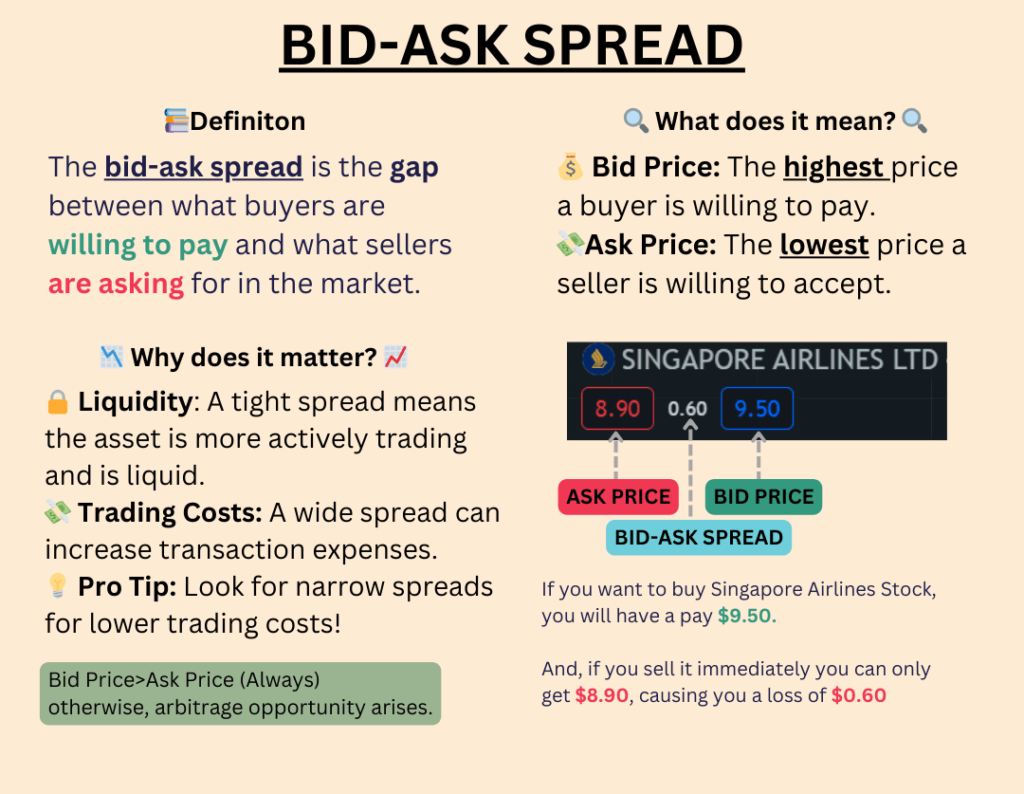The bid-ask spread represents the gap between the highest price a buyer is prepared to pay for an asset and the lowest price a seller is willing to accept.
Table of Contents
What Is Bid-Ask Spread?
The bid-ask spread also indicates the liquidity of the asset; a higher bid-ask spread means the security is less liquid and has fewer buyers and sellers.

Why Is The Bid-Ask Spread Important?
The bid-ask spread is important as it directly affects the cost of trading. It shows the difference between what buyers are willing to pay (bid) and what sellers want to receive (ask).
The spread between the bid price and the ask price shows the liquidity of the asset or market. A narrow spread means the market is liquid, with plenty of buyers and sellers, making it easier to trade.
By analyzing bid-ask spreads, a traders can decide when to enter or exit trades. For instance, trading during high liquidity periods (e.g., market open) can reduce spread-related costs.
How to Calculate the Bid-Ask Spread
The bid-ask spread is calculated as the difference between the ask price (the lowest price a seller is willing to accept) and the bid price (the highest price a buyer is willing to pay). The formula is:
Spread=Ask Price−Bid Price
Scenario: Basic Spread Calculation
- Bid Price: ₹100
- Ask Price: ₹102
Bid-Ask Spread=₹102−₹100=₹2
While the bid-ask spread calculation is simple but sometimes it could be made complex during dynamic volatile market. For example, in markets with multiple tiers of bids and asks, you might calculate a weighted average spread that takes into account the distribution of orders at different price levels.
Factors Influence The Bid-Ask Spread?
- Liquidity: Assets with high liquidity (like major stocks or currencies) have narrow spreads, while less liquid assets (like small-cap stocks or exotic currencies) have wider spreads.
- Market Volatility: During periods of high volatility, such as during economic or geopolitical events, bid-ask spreads tend to widen due to increased uncertainty.
- Trading Volume: Higher trading volume leads to tighter spreads because more buyers and sellers compete, making it easier to match orders.
- Market Conditions: In stable market conditions, spreads are usually narrow, but during times of economic instability or market disruptions, spreads tend to widen.
- Time of Day: Spreads are typically narrower during peak market hours when trading activity is high, and wider during off-peak times when liquidity is lower.

Relation Between Bid-Ask Spread & Market Liquidity?
Example of a Bid-Ask Spread in Stocks?
Final Thoughts
The bid-ask spread is a useful indicator of liquidity. Securities with higher liquidity typically have smaller spreads, while illiquid ones tend to have larger spreads. Investors should pay attention to the spread of any security they plan to buy or sell to gauge how actively it is traded and determine the most appropriate type of order to use for their transaction.

